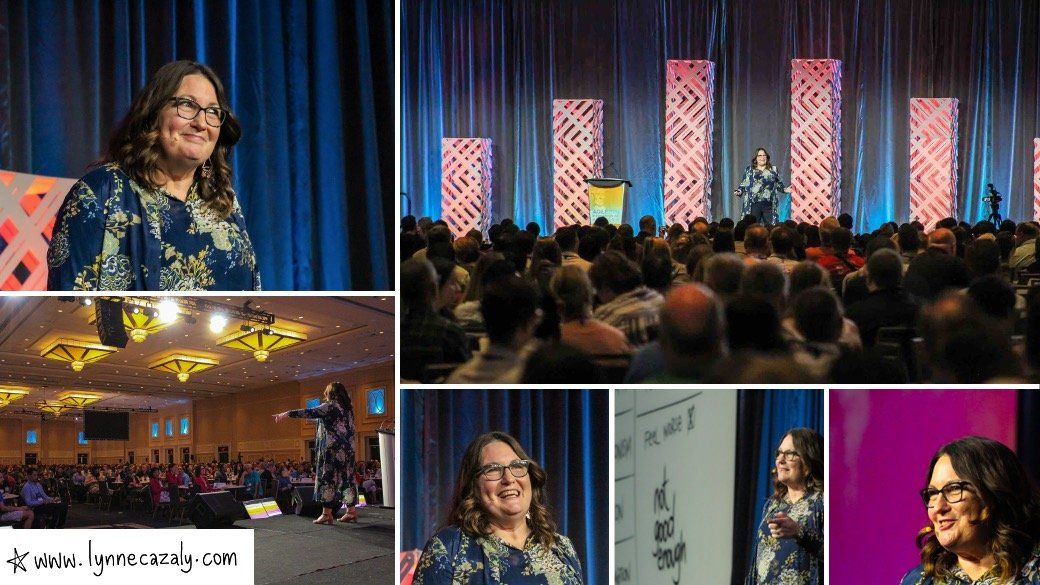Being Our True-Enough Selves

People do all sorts of things to be effective and appropriate in the ways they show up and fit into the world around them. It’s not wrong to adjust ourselves to our environment, provided the adjustment doesn’t rob us of our truth. But the trendy pursuit of “authenticity” can bring confusion on this matter.
The Nuances of Authenticity
To be authentic does not mean to “Larry David” our way through the world without filters. It doesn’t mean being rude (telling your grandma she looks shockingly older with her COVID-uncolored gray hair) or putting our most private emotions on public display. Some withholding is born of graciousness or purposefulness. It’s not lying; it’s restraint.
Authenticity can also involve what the therapeutic community would call “acting as-if” by behaving in a way we want to grow into. When I graduated from college and got my first job, way back in the golden age of pens, my mother told me to bring a fancy pen to work, which I really couldn’t afford. That gorgeous Montblanc instrument would make a statement while representing something that was aspirationally true for me. It was completely me—but not yet.
Authenticity is not an equal playing field. In Adam Grant’s wonderful podcast Work Life, he tackles this subject and cautions that authenticity often elevates us professionally only when we already have respect in our organization. This is why Bono doesn’t have to shave or change his T-shirt before an awards show—because he already is BONO. But if you do not yet have respect, letting it all hang out can be damaging to your professional status.
Read More: Check out this great article on Image vs Authenticity
The Woman-in-Business Twist
For women, there’s an additional complication, and I’ve experienced it personally. In hindsight, I somewhat regret that I’ve spent twenty years making subtle changes to fit in a tad better with male clients. I learned some sports analogies, I became fluent in corporate jargon, I quieted my desire to dye the bottom half of my hair purple because conservative male clients might not notice my smart brain beneath lavender locks.
Some women pick up golf. Some learn to appreciate whiskey. Hedge-fund cofounder Karen Finerman tells us “to go where the men are” as a strategy to stand out. As women, we enter the world of men where it seems easiest to meet them, but we can lose ourselves in the process.
Read this great article by Roshan Thiran: Boost Your Authenticity with 3 Words
A new element was added in the first months of the pandemic when we were collectively “outed” in Zoom-reveals of our “authenticity” with our kids, pets, and laundry on full display. The pandemic cracked open a beautiful kind of realness that extended into the way we related to each other, not just our environments. I believe this new realness is here to stay, and that’s a good thing. But it will only serve us well if we incorporate it wisely and cautiously.
It’s Not a State—It’s a Spectrum
Reflecting on my personal path and many conversations, I’ve come to define authenticity not as a state but as an intentional spectrum. Regardless of gender, the path to authenticity is one where we experiment to find the just-right amount of truth paired with decorum, and then we continually adjust that balance to fit the situation and our goals.
We can think of three points on the authenticity spectrum:
- Authentic: the realest, rawest, undressed you
- Purposefully Authentic: the real you filtered through awareness of others and your goals
- Contrived: pretending actively to be something you are not or abandoning your core beliefs
If I was just straight-up authentic all the time, I’d go barefoot to work (and everywhere else). I’d talk openly and passionately about politics and religion. I might make an inappropriate joke because I have a bit of a loose-lips problem—but although that would be authentic, it would not be in pursuit of my goals. It certainly would be so real, but I might offend someone and embarrass myself.
As a rule, I’d rather be purposefully authentic—real but filtered through a lens of professional appropriateness and awareness of others. We can’t ignore expectations around us or the desires and sensitivities of others. Yes, it’s great to be real with our emotions, but being purposefully authentic means that if I’m struggling one day, I’ll feel my feelings but only in private or with a trusted coworker.
But it’s important to avoid being contrived. This is the act of stepping away from ourselves and into the shoes of a character we’ve been assigned by others or one we are imitating. Such behavior is not authentic; it’s performance. Being contrived leads us to lose ourselves because our values and beliefs take a back seat to fitting in or wooing others. It’s a dangerous place.
The authenticity that fuels our best work is about understanding this spectrum and intentionally taking charge of when and how to reveal our truest selves without losing our balance. My wish for all of us is to play together and find that beautiful, purposeful place of smart realness right in the middle.
How about I see you there?
This article was also published on Juliet Funt's LinkedIn
To read more great articles and learn daily, check out necole below:
Necole is a state of the art learning platform that curates personalised learning just for you. To find out more about necole, click here or email info@leaderonomics.com
To read more articles by Juliet Funt, click here
Personal
Tags: Values









